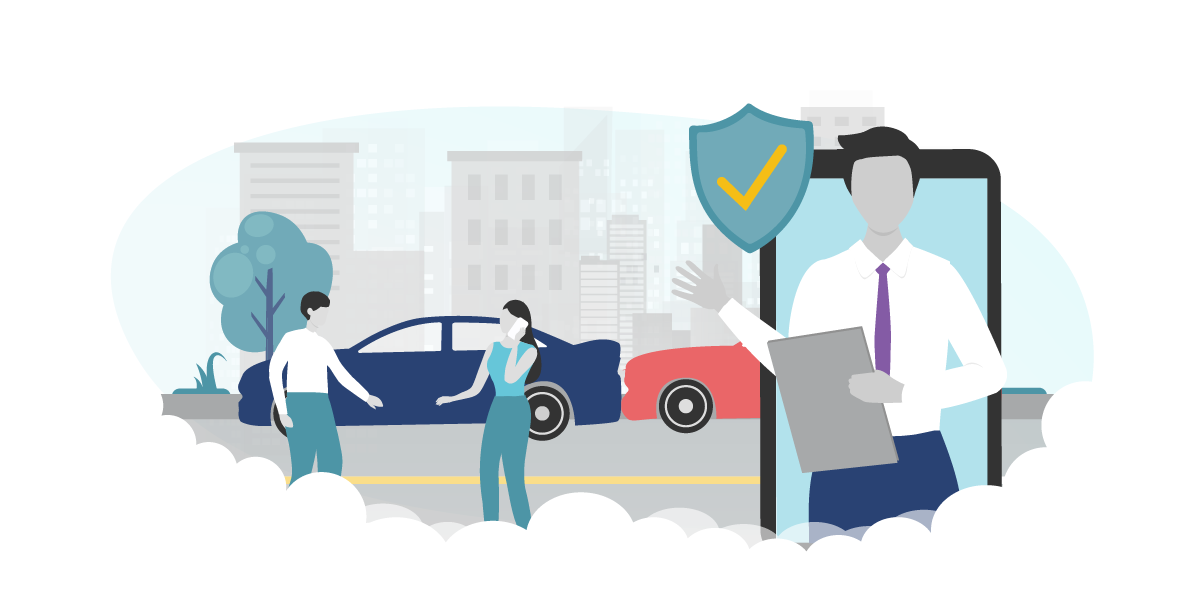Understanding Auto Accidents: What Qualifies and What to Do Next
July 28, 2025

Car accidents can be extremely overwhelming, even when they’re minor. Emotions can take over, decisions have to be made on the spot, and the aftermath can leave you wondering if you did the right thing. While we hope you’re never in this situation, understanding what defines an accident and knowing the steps to take if you’re involved can help you navigate the experience more confidently and reduce stress during a difficult time.

What is an Auto Accident?
Defining an auto accident might seem straightforward, but the reality is more complicated than many people realize. Not every vehicle-related incident qualifies as an “accident” under the law, and this distinction is crucial. That means if an incident doesn’t meet the legal definition, your Auto Insurance or Accident Benefits coverage might not apply.
Because interpretations of the law can vary, some cases fall into legal grey areas, making it even more important to understand what does and doesn’t qualify as an accident.
Take Ontario, for example. Under Ontario’s Statutory Accident Benefits Schedule (SABS), an event must meet two key criteria to qualify for Accident Benefits, which are separate from your general Auto Insurance. If the incident qualifies, Accident Benefits specifically provide compensation for medical expenses, rehabilitation support, income replacement, and more.
RELATED: Understanding Accident Benefits
Accident Qualification: The Two-Part Test:
1. The Purpose Test
The purpose is generally easy to prove. The vehicle in the accident must have been used in an ordinary and well-known way, such as driving, parking, entering, exiting, or loading/unloading. If you were doing anything unrelated (like attending the scene after an accident occurs), it might not qualify.
2. The Causation Test
The vehicle’s use must have directly caused impairment. This is where things get tricky. Courts use three guiding questions to figure this out:
- Would the injury have happened “but for” the car’s use? (In other words, would the injury have occurred if the car had not been used?)
- Was there an intervening act that broke the connection?
- Was the car’s use the dominant cause of the injury?
That’s why it’s so important to not only have Comprehensive Insurance, but to truly understand what your policy covers and ensure you’re supported when circumstances are unclear or contested. Having the right policy and knowing exactly what it includes, can be the difference between getting the help you need and facing those challenges on your own.
PRO Tips: What Should You Do After a Car Accident?
If you’re in an accident, here’s a 5-step guide to help you navigate the situation as safely and smoothly as possible:
Step 1: Check for Injuries & Move to Safety
- Your safety and the safety of those around you comes first. Immediately check yourself and your passengers for any injuries.
- If it’s safe to do so, move your vehicle to the side of the road to avoid further hazards. If there’s a fire, smoke, leaking fluids, or any other danger, evacuate the vehicle immediately and move to a safe distance.
- Remain at the scene. Leaving the scene of an accident is against the law and can result in serious consequences.
- Try to stay calm, avoid blaming others, and don’t engage in arguments. Cooperation and composure can help keep the situation under control and support a smoother resolution later on.
Step 2: Call the Police
- In Canada, you’re required to report a car accident if anyone is injured or if the property damage exceeds the provincial or territorial threshold.
- In Ontario, you must report a car accident if anyone is injured, if the total property damage exceeds $5,000, or if the accident involves a criminal act, an uninsured driver, or damage to public property (even if the damage is below $5,000).
- A police report creates an official record, which can be critical when filing an insurance claim.
Step 3: Document
- Take clear photos of all vehicles (including damage and plates), the accident scene, road and weather conditions, and any visible injuries.
- Note the date, time, location, and contact info for any witnesses. If police are present, record the officer’s name, badge number, and report number.
In terms of the other driver(s), exchange:
- Name and contact info
- Driver’s license and license plate numbers
- Insurance details (company and policy number)
- Vehicle make, model, and colour
Stay calm and cooperative, but don’t admit fault. Liability is determined later based on evidence and insurance rules. Avoid signing anything or promising to pay for damages at the scene.
Step 4: Don’t Delay
- Even if you feel okay, it’s smart to get checked by a healthcare provider. Some injuries surface hours or days later (like whiplash or concussions). Early medical attention helps ensure nothing is overlooked and creates a record if you need to make a claim.
- Likewise, even if the damage to your vehicle seems minor, don’t wait to report it to your insurance company. While some hesitate to avoid a potential premium increase, early reporting can actually work in your favour. Insurers can guide you on next steps and help you access the support you’re entitled to.
RELATED: Only 50% of Canadians Know What to Do After a Car Accident: Do You?
Step 5: Know Your Coverage, Know Your Support
Whether it’s a minor fender-bender or a serious collision, the right insurance coverage makes all the difference–not just in protecting your vehicle, but in making sure you have access to care, support, and financial relief when you need it most.
Many drivers know they need Auto Insurance, but few fully understand what their policy includes. A clear understanding can help you avoid costly surprises, recover more quickly, and choose the right level of protection. Auto Insurance isn’t always as simple as it seems.
Most basic policies include:
- Third-Party Liability: Covers damage or injury you cause to other people or their property.
- Accident Benefits: Helps pay for medical care, rehab, or income loss if you’re injured. Learn more.
- Direct Compensation Property Damage (DCPD): Covers damage to your own vehicle if someone else is at fault.
For extra protection, you can add optional coverages like:
- Collision Insurance: Covers damages to your vehicle in the event of a collision with another vehicle or a stationary object. Learn more.
- Comprehensive Insurance: Covers non-collision events like theft, vandalism, or weather damage.
- Accident Forgiveness Insurance: Stops your first at-fault accident from raising your premium. Learn more.
- And more.
If you’re having trouble knowing what’s right, connect with a broker like PROLINK. We’ll break down your coverage so you know exactly what’s included, and what isn’t, ensuring you’re supported every step of the way.
RELATED: What to Know Before Buying Car Insurance for the First Time
A car accident is something no one wants to experience–but if you do, knowing your rights, responsibilities, and coverage can make a difficult situation easier to manage.
To learn more, connect with PROLINK today. With over 40 years in business and a network of over 30 insurers, our knowledgeable team will help you navigate your coverage options, understand your Accident Benefits, and choose the right Auto Insurance for your lifestyle. Whether you’re exploring new coverage or managing a claim, we’ll make sure you’re informed, supported, and back behind the wheel with confidence.
PROLINK’s blog posts are general in nature. They do not take into account your personal objectives or financial situation and are not a substitute for professional advice. The specific terms of your policy will always apply. We bear no responsibility for the accuracy, legality, or timeliness of any external content.




